Opinion & Analysis
WRX Insider: How the Callaway tour staff matches up golf ball and irons
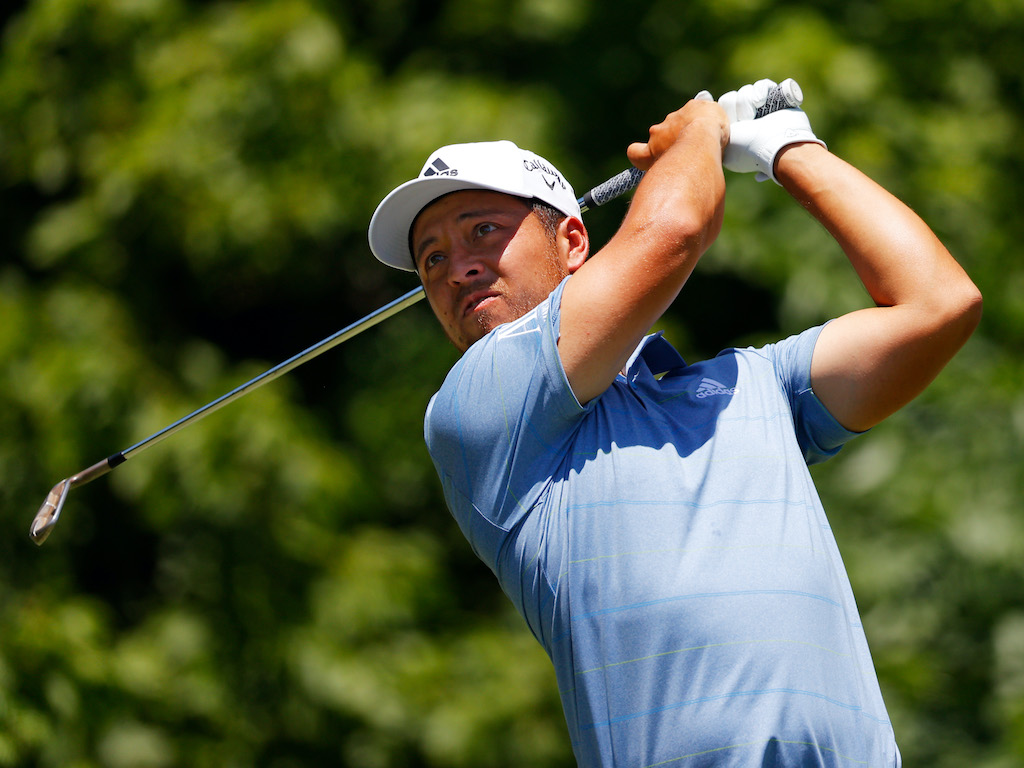
It’s not something that is widely explored. When it comes to the golf ball, we typically prioritize driver numbers, wedge numbers, and feel. In actuality, however, it’s a player’s irons that need to be optimized more than anything. Full shots, 3/4, fades, draws—the shot varietal with irons is all over the map.
So, when testing players, how does the team at Callaway dial in the ball and the irons to work in harmony with each other?
With the new Callaway X Forged and Apex MB just hitting the scene, it seemed like a perfect time to understand how the players on tour fit the ball to the irons and vice versa.
I had a chance to speak with Callaway Golf Ball R&D specialist Nick Yontz and Director of Tour Operations Jacob Davidson on dialing in the ball and the irons to match up with the best players in the world.
JW: How much do you depend on Nick’s expertise throughout the season, especially with new irons (X Forged and Apex MB) having just hit the market?
JD: Any time we launch a new product, it’s essential for the tour team to know how the new product will perform. Nick provides in-depth data on how our golf ball will perform with the new products. When you look at the golf bag, there is one constant variable and that’s the golf ball. Our ultimate goal is to collaborate with the iron engineers and golf ball engineers to design a product that works together to help golfers play better. Nick Yontz is a tremendous resource for our tour team and has worked closely with several major winners in his career. We lean on him weekly for insight into in-depth product performance and future prototype products.
JW: When considering the spin off of the irons for a player like Xander, is he working around one number or are the multiple spin windows to hit?
JD: Spin rates can vary from player to player depending on clubhead delivery and launch numbers. Currently, we’ve worked hard to get Xander’s iron spin rates into a range that we feel allows him to hit a variety of shots to play his best golf.
JW: Let’s look at an LPGA profile for a player like Anne van Dam. Where does Chrome Soft X benefit her the most?
NY: The Chrome Soft X has blended with Anne’s club set up in a way that she can be an excellent driver of the golf ball, while better controlling iron and wedge spin rates compared to her previous golf ball.
JW: If a player is looking for a higher launch window with the irons, what tweaks are you making, all while honoring the specific DNA of a player’s bag?
JD: There are several different levers we can move in order to raise the launch window. However, in order to determine which lever makes the most sense you have to fully understand the player’s bag. In order to do this, each club has to be studied deeply to know the cause and effects of a change. After we have completed this process, we will look at what options will best fit the player.
JW: As you look at the numbers, where do you see the improvements (gains) with the CS X vs what you saw with previous balls?
NY: Across the board, we’ve seen measurable ball-speed gains on the launch monitor during player testing sessions. It’s exciting for them and us when they reach driver ball speeds (and distances) that they couldn’t before!
JW: On the PGA Tour, is there an overall RPM profile that all players chase or is it player specific?
*question based on general rule of number on club x 1000 RPM IE 7 iron spins at 7000 RPM
JD: Our goal at Callaway is to move all of our staff players into optimal ranges in an iron spin. Our 2020 golf ball and the iron lineup has allowed us to move several players bags into a more optimal range this year. We work closely with the player, instructor, and caddie to constantly find ways to improve performance.
JW: In regards to working with a Champions Tour Player that has gone from Balata into CSX. Is that player still playing out of the same launch windows that he has for years or is he having to adjust for new technology?
NY: There are some differences in modern equipment that we hear from players that have played over multiple decades. The shape of the trajectory is an example. Current trajectories can look flatter or may get up higher sooner in the flight than a balata did. Players who have experienced balata and modern balls also talk about the amount of lateral movement being less today.
JW: Discuss how you guys work together on a week to week basis. What does it look like?
JD: Nick is an excellent resource for the tour team. Each week, we are providing feedback and observations to him from what we are seeing and hearing across all the major tours. Throughout the year, Nick will attend several tour events allowing us to work closely together with players on the range tee or on the golf course.
NY: Jacob and the entire tour team knows each tour player at the deepest level. For example, knowing each player’s swing tendencies and look preferences enhances the raw numbers we collect. Tour players are the best product testers in the world that push us to make better equipment.
JW: Can you both talk to me about the importance of spin with your irons?
JD: It’s much easier to take spin off than to add it from the fairway. The majority of shots that a tour player hits during a round of golf will be off-speed. When you reduce speed, spin also reduces. We’ve found that when we are fitting a player to a golf ball and irons, it’s imperative to pay close attention to how much reduction in spin comes from off-speed shots.
NY: Completely agree with Jacob. While we will do work on the driving range with a player, we need to see how it performs on the golf course in different situations as well (fairway/first-cut/rough, headwind/downwind/morning dew…)
Opinion
It may seem trivial, but to me, this is the secret sauce of really making a bag and fitting work for you. Pay attention to ball speed and launch but mostly spin rates. If the ball doesn’t spin you can’t control it—I don’t care how high it goes or steep it lands.
In the past year, I have focused way more on proper spin with my irons than ever before. What I have found is when 4-PW are in the right spin windows, which for me is around 6,800 RPM with a 7 iron, my iron play has improved dramatically.
See the PGA and LPGA TrackMan averages from 2019 below. At my age and speed, I actually strive to stay right in between the averages for both tours. It’s not only realistic for me but also has actually helped.
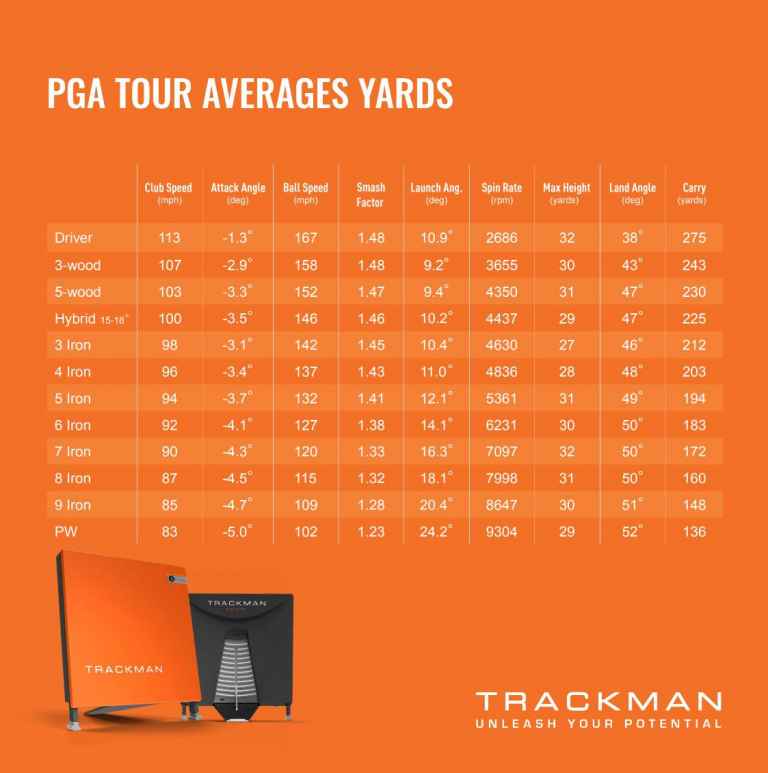
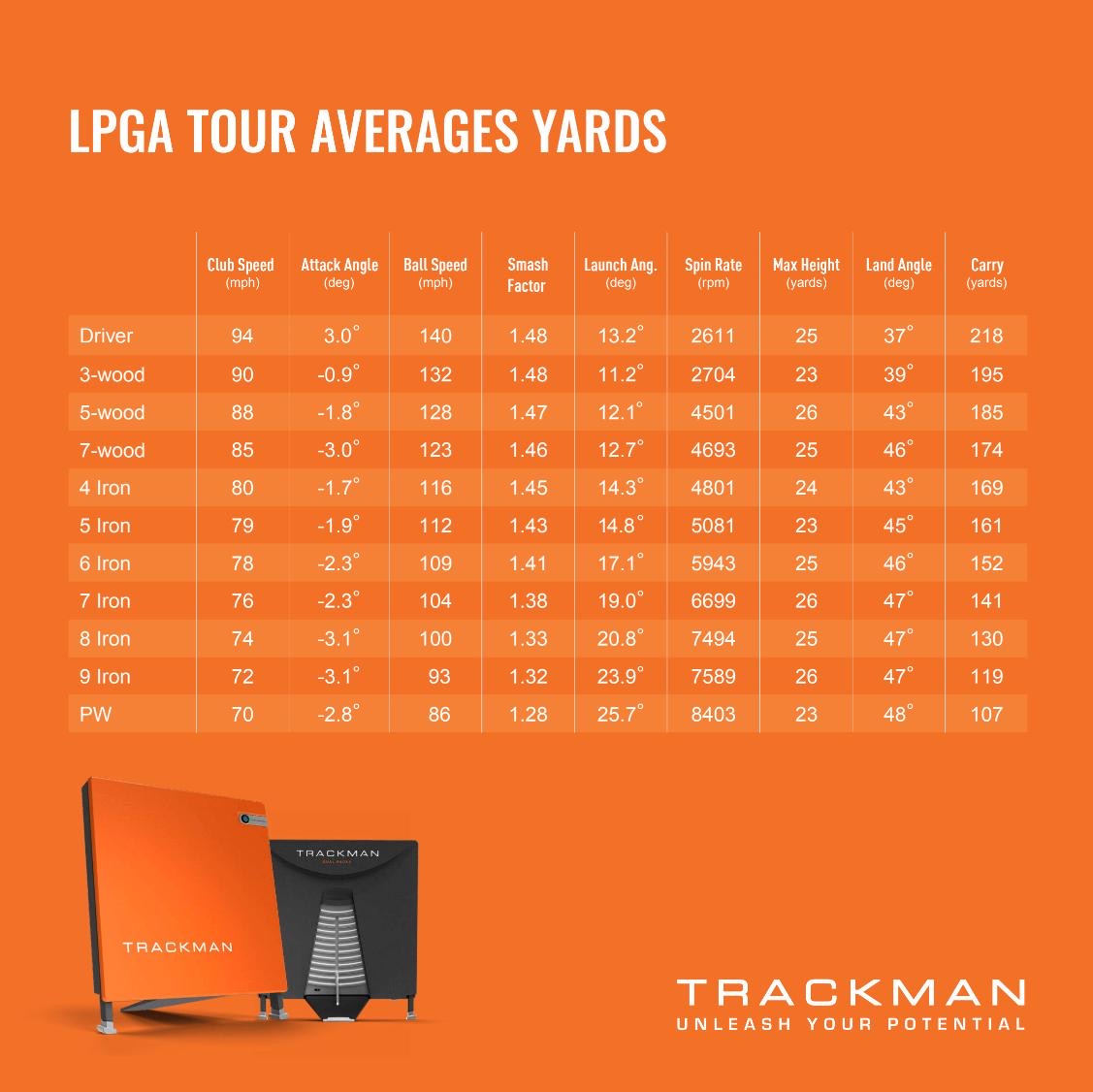
- LIKE88
- LEGIT21
- WOW4
- LOL0
- IDHT1
- FLOP4
- OB1
- SHANK31
19th Hole
Vincenzi’s 2024 Zurich Classic of New Orleans betting preview

The PGA TOUR heads to New Orleans to play the 2023 Zurich Classic of New Orleans. In a welcome change from the usual stroke play, the Zurich Classic is a team event. On Thursday and Saturday, the teams play best ball, and on Friday and Sunday the teams play alternate shot.
TPC Louisiana is a par 72 that measures 7,425 yards. The course features some short par 4s and plenty of water and bunkers, which makes for a lot of exciting risk/reward scenarios for competitors. Pete Dye designed the course in 2004 specifically for the Zurich Classic, although the event didn’t make its debut until 2007 because of Hurricane Katrina.
Coming off of the Masters and a signature event in consecutive weeks, the field this week is a step down, and understandably so. Many of the world’s top players will be using this time to rest after a busy stretch.
However, there are some interesting teams this season with some stars making surprise appearances in the team event. Some notable teams include Patrick Cantlay and Xander Schauffele, Rory McIlroy and Shane Lowry, Collin Morikawa and Kurt Kitayama, Will Zalatoris and Sahith Theegala as well as a few Canadian teams, Nick Taylor and Adam Hadwin and Taylor Pendrith and Corey Conners.
Past Winners at TPC Louisiana
- 2023: Riley/Hardy (-30)
- 2022: Cantlay/Schauffele (-29)
- 2021: Leishman/Smith (-20)
- 2019: Palmer/Rahm (-26)
- 2018: Horschel/Piercy (-22)
- 2017: Blixt/Smith (-27)
2024 Zurich Classic of New Orleans Picks
Tom Hoge/Maverick McNealy +2500 (DraftKings)
Tom Hoge is coming off of a solid T18 finish at the RBC Heritage and finished T13 at last year’s Zurich Classic alongside Harris English.
This season, Hoge is having one of his best years on Tour in terms of Strokes Gained: Approach. In his last 24 rounds, the only player to top him on the category is Scottie Scheffler. Hoge has been solid on Pete Dye designs, ranking 28th in the field over his past 36 rounds.
McNealy is also having a solid season. He’s finished T6 at the Waste Management Phoenix Open and T9 at the PLAYERS Championship. He recently started working with world renowned swing coach, Butch Harmon, and its seemingly paid dividends in 2024.
Keith Mitchell/Joel Dahmen +4000 (DraftKings)
Keith Mitchell is having a fantastic season, finishing in the top-20 of five of his past seven starts on Tour. Most recently, Mitchell finished T14 at the Valero Texas Open and gained a whopping 6.0 strokes off the tee. He finished 6th at last year’s Zurich Classic.
Joel Dahmen is having a resurgent year and has been dialed in with his irons. He also has a T11 finish at the PLAYERS Championship at TPC Sawgrass which is another Pete Dye track. With Mitchell’s length and Dahmen’s ability to put it close with his short irons, the Mitchell/Dahmen combination will be dangerous this week.
Taylor Moore/Matt NeSmith +6500 (DraftKings)
Taylor Moore has quickly developed into one of the more consistent players on Tour. He’s finished in the top-20 in three of his past four starts, including a very impressive showing at The Masters, finishing T20. He’s also finished T4 at this event in consecutive seasons alongside Matt NeSmith.
NeSmith isn’t having a great 2024, but has seemed to elevate his game in this format. He finished T26 at Pete Dye’s TPC Sawgrass, which gives the 30-year-old something to build off of. NeSmith is also a great putter on Bermudagrass, which could help elevate Moore’s ball striking prowess.
- LIKE8
- LEGIT3
- WOW1
- LOL1
- IDHT0
- FLOP3
- OB1
- SHANK2
19th Hole
Vincenzi’s 2024 LIV Adelaide betting preview: Cam Smith ready for big week down under

After having four of the top twelve players on the leaderboard at The Masters, LIV Golf is set for their fifth event of the season: LIV Adelaide.
For both LIV fans and golf fans in Australia, LIV Adelaide is one of the most anticipated events of the year. With 35,000 people expected to attend each day of the tournament, the Grange Golf Club will be crawling with fans who are passionate about the sport of golf. The 12th hole, better known as “the watering hole”, is sure to have the rowdiest of the fans cheering after a long day of drinking some Leishman Lager.
The Grange Golf Club is a par-72 that measures 6,946 yards. The course features minimal resistance, as golfers went extremely low last season. In 2023, Talor Gooch shot consecutive rounds of 62 on Thursday and Friday, giving himself a gigantic cushion heading into championship Sunday. Things got tight for a while, but in the end, the Oklahoma State product was able to hold off The Crushers’ Anirban Lahiri for a three-shot victory.
The Four Aces won the team competition with the Range Goats finishing second.
*All Images Courtesy of LIV Golf*
Past Winners at LIV Adelaide
- 2023: Talor Gooch (-19)
Stat Leaders Through LIV Miami
Green in Regulation
- Richard Bland
- Jon Rahm
- Paul Casey
Fairways Hit
- Abraham Ancer
- Graeme McDowell
- Henrik Stenson
Driving Distance
- Bryson DeChambeau
- Joaquin Niemann
- Dean Burmester
Putting
- Cameron Smith
- Louis Oosthuizen
- Matt Jones
2024 LIV Adelaide Picks
Cameron Smith +1400 (DraftKings)
When I pulled up the odds for LIV Adelaide, I was more than a little surprised to see multiple golfers listed ahead of Cameron Smith on the betting board. A few starts ago, Cam finished runner-up at LIV Hong Kong, which is a golf course that absolutely suits his eye. Augusta National in another course that Smith could roll out of bed and finish in the top-ten at, and he did so two weeks ago at The Masters, finishing T6.
At Augusta, he gained strokes on the field on approach, off the tee (slightly), and of course, around the green and putting. Smith able to get in the mix at a major championship despite coming into the week feeling under the weather tells me that his game is once again rounding into form.
The Grange Golf Club is another course that undoubtedly suits the Australian. Smith is obviously incredibly comfortable playing in front of the Aussie faithful and has won three Australian PGA Championship’s. The course is very short and will allow Smith to play conservative off the tee, mitigating his most glaring weakness. With birdies available all over the golf course, there’s a chance the event turns into a putting contest, and there’s no one on the planet I’d rather have in one of those than Cam Smith.

Louis Oosthuizen +2200 (DraftKings)
Louis Oosthuizen has simply been one of the best players on LIV in the 2024 seas0n. The South African has finished in the top-10 on the LIV leaderboard in three of his five starts, with his best coming in Jeddah, where he finished T2. Perhaps more impressively, Oosthuizen finished T7 at LIV Miami, which took place at Doral’s “Blue Monster”, an absolutely massive golf course. Given that Louis is on the shorter side in terms of distance off the tee, his ability to play well in Miami shows how dialed he is with the irons this season.
In addition to the LIV finishes, Oosthuizen won back-to-back starts on the DP World Tour in December at the Alfred Dunhill Championship and the Mauritus Open. He also finished runner-up at the end of February in the International Series Oman. The 41-year-old has been one of the most consistent performers of 2024, regardless of tour.
For the season, Louis ranks 4th on LIV in birdies made, T9 in fairways hit and first in putting. He ranks 32nd in driving distance, but that won’t be an issue at this short course. Last season, he finished T11 at the event, but was in decent position going into the final round but fell back after shooting 70 while the rest of the field went low. This season, Oosthuizen comes into the event in peak form, and the course should be a perfect fit for his smooth swing and hot putter this week.

- LIKE12
- LEGIT3
- WOW1
- LOL1
- IDHT0
- FLOP1
- OB1
- SHANK1
Opinion & Analysis
The Wedge Guy: What really makes a wedge work? Part 1

Of all the clubs in our bags, wedges are almost always the simplest in construction and, therefore, the easiest to analyze what might make one work differently from another if you know what to look for.
Wedges are a lot less mysterious than drivers, of course, as the major brands are working with a lot of “pixie dust” inside these modern marvels. That’s carrying over more to irons now, with so many new models featuring internal multi-material technologies, and almost all of them having a “badge” or insert in the back to allow more complex graphics while hiding the actual distribution of mass.
But when it comes to wedges, most on the market today are still single pieces of molded steel, either cast or forged into that shape. So, if you look closely at where the mass is distributed, it’s pretty clear how that wedge is going to perform.
To start, because of their wider soles, the majority of the mass of almost any wedge is along the bottom third of the clubhead. So, the best wedge shots are always those hit between the 2nd and 5th grooves so that more mass is directly behind that impact. Elite tour professionals practice incessantly to learn to do that consistently, wearing out a spot about the size of a penny right there. If impact moves higher than that, the face is dramatically thinner, so smash factor is compromised significantly, which reduces the overall distance the ball will fly.
Every one of us, tour players included, knows that maddening shot that we feel a bit high on the face and it doesn’t go anywhere, it’s not your fault.
If your wedges show a wear pattern the size of a silver dollar, and centered above the 3rd or 4th groove, you are not getting anywhere near the same performance from shot to shot. Robot testing proves impact even two to three grooves higher in the face can cause distance loss of up to 35 to 55 feet with modern ‘tour design’ wedges.
In addition, as impact moves above the center of mass, the golf club principle of gear effect causes the ball to fly higher with less spin. Think of modern drivers for a minute. The “holy grail” of driving is high launch and low spin, and the driver engineers are pulling out all stops to get the mass as low in the clubhead as possible to optimize this combination.
Where is all the mass in your wedges? Low. So, disregarding the higher lofts, wedges “want” to launch the ball high with low spin – exactly the opposite of what good wedge play requires penetrating ball flight with high spin.
While almost all major brand wedges have begun putting a tiny bit more thickness in the top portion of the clubhead, conventional and modern ‘tour design’ wedges perform pretty much like they always have. Elite players learn to hit those crisp, spinny penetrating wedge shots by spending lots of practice time learning to consistently make contact low in the face.
So, what about grooves and face texture?
Grooves on any club can only do so much, and no one has any material advantage here. The USGA tightly defines what we manufacturers can do with grooves and face texture, and modern manufacturing techniques allow all of us to push those limits ever closer. And we all do. End of story.
Then there’s the topic of bounce and grinds, the most complex and confusing part of the wedge formula. Many top brands offer a complex array of sole configurations, all of them admittedly specialized to a particular kind of lie or turf conditions, and/or a particular divot pattern.
But if you don’t play the same turf all the time, and make the same size divot on every swing, how would you ever figure this out?
The only way is to take any wedge you are considering and play it a few rounds, hitting all the shots you face and observing the results. There’s simply no other way.
So, hopefully this will inspire a lively conversation in our comments section, and I’ll chime in to answer any questions you might have.
And next week, I’ll dive into the rest of the wedge formula. Yes, shafts, grips and specifications are essential, too.
- LIKE34
- LEGIT7
- WOW1
- LOL1
- IDHT2
- FLOP3
- OB1
- SHANK3
-

 19th Hole2 weeks ago
19th Hole2 weeks agoDave Portnoy places monstrous outright bet for the 2024 Masters
-

 19th Hole4 days ago
19th Hole4 days agoJustin Thomas on the equipment choice of Scottie Scheffler that he thinks is ‘weird’
-

 19th Hole2 weeks ago
19th Hole2 weeks agoTiger Woods arrives at 2024 Masters equipped with a putter that may surprise you
-

 19th Hole4 days ago
19th Hole4 days ago‘Absolutely crazy’ – Major champ lays into Patrick Cantlay over his decision on final hole of RBC Heritage
-

 19th Hole2 weeks ago
19th Hole2 weeks agoTwo star names reportedly blanked Jon Rahm all week at the Masters
-

 19th Hole1 week ago
19th Hole1 week agoReport: LIV Golf identifies latest star name they hope to sign to breakaway tour
-

 19th Hole2 weeks ago
19th Hole2 weeks agoNeal Shipley presser ends in awkward fashion after reporter claims Tiger handed him note on 8th fairway
-

 19th Hole1 week ago
19th Hole1 week agoBrandel Chamblee has ‘no doubt’ who started the McIlroy/LIV rumor and why



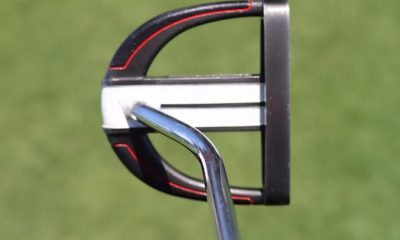







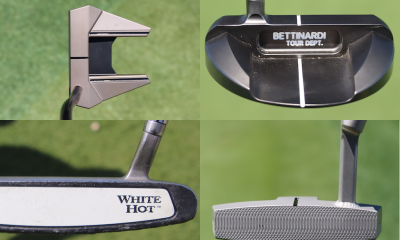

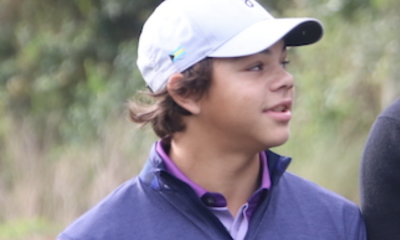










Aztec
Oct 27, 2020 at 10:36 pm
“…each club has to be studied deeply to know the cause and effects of a change. After we have completed this process, we will look at what options will best fit the player.”.
The question was basically, what would you do to have a player hit higher. They should have just said, “no comment”…
jgpl011
Oct 27, 2020 at 5:03 am
Amazing this is only being highlighted and/or discussed now.
For me, just an ave club hack this is always considered when I am looking for new irons
The ball high, flight and spin with a 5 iron and 8 iron are big factors in deciding any new set
My ball is always a ProV1 and std lofts (7 iron 33deg max)
Rory
Oct 27, 2020 at 3:35 am
TXG just did a show on the Callaway Chrome Soft and the ball did not do well against the top tier balls…
drkviol801
Oct 26, 2020 at 11:43 pm
Callaway balls are the worst, funny how their best players have FJ and Titleist ball deals…
Eric
Oct 26, 2020 at 7:13 pm
Horrible answers to great questions, either they didn’t know or are too afraid to reveal stuff their bosses don’t want getting out. Why even agree to the interview if you’re gonna answer like Bill Belichick?
Paul Runyan
Oct 26, 2020 at 2:50 pm
So basically a very general non technical sales presentation for the new balls.
Like to see some actual data .
Bill
Oct 26, 2020 at 9:04 am
Answers were too general. I didn’t learn much.
Travis
Oct 26, 2020 at 9:03 am
Would’ve been nice to see some actual answers to the questions. The answers were so robotic and almost political in their detail avoidance as if this person is guarding some trade secret lol
DB
Oct 26, 2020 at 8:40 am
Good try at an interview, but would have been much more interesting if they had answered with some specific examples of players and the specific numbers and issues they fixed. Instead of just answering most questions with “we move into optimal ranges” or “There are several levers we can adjust”